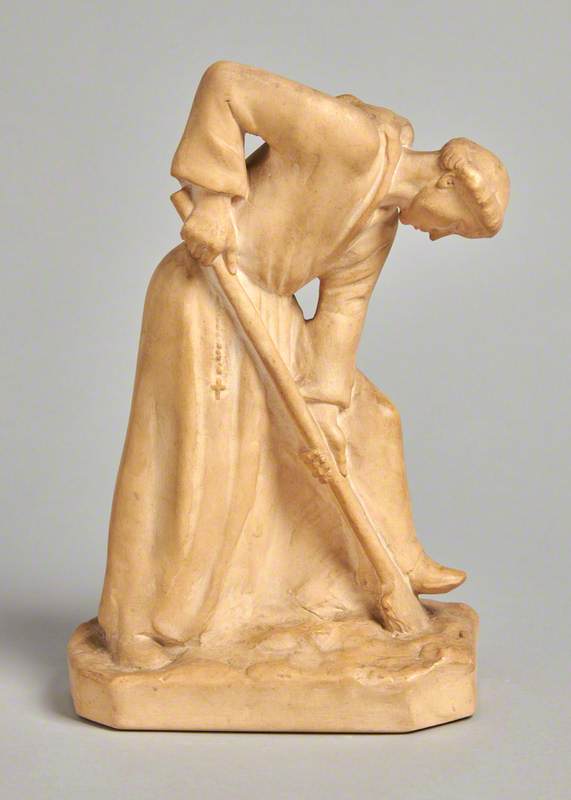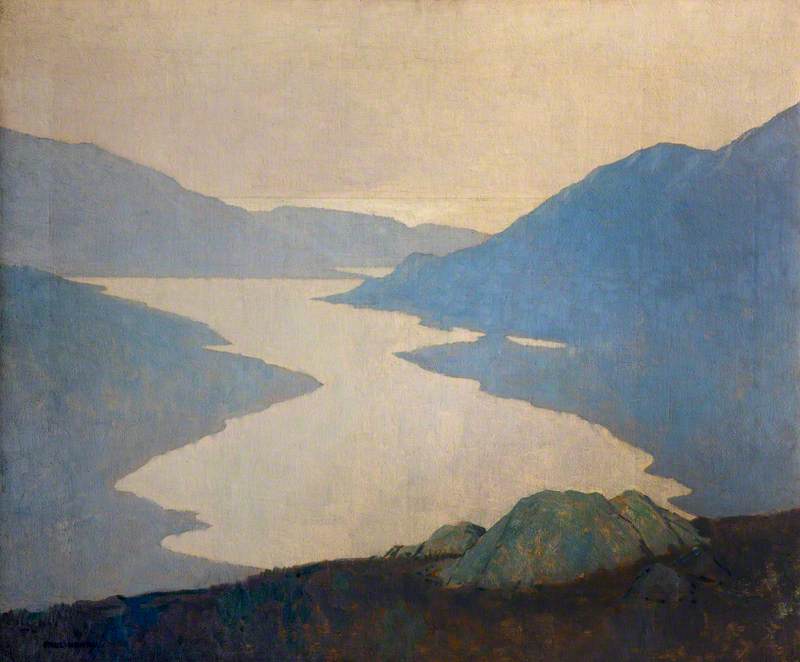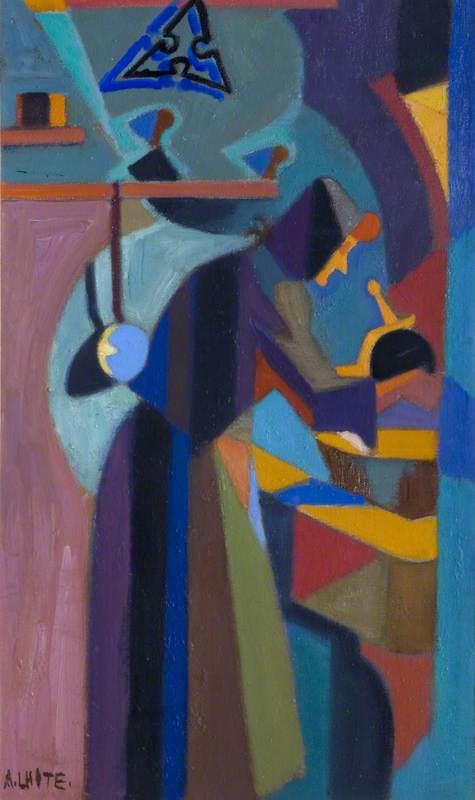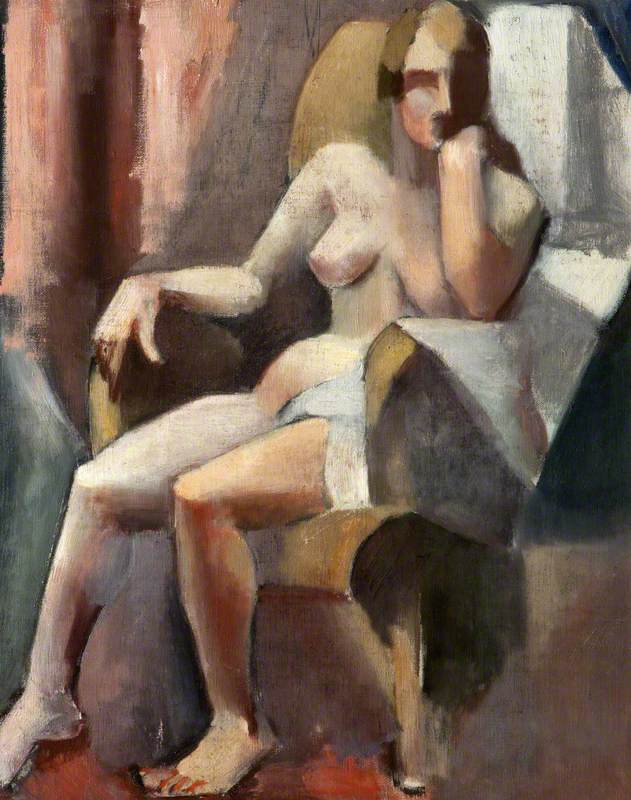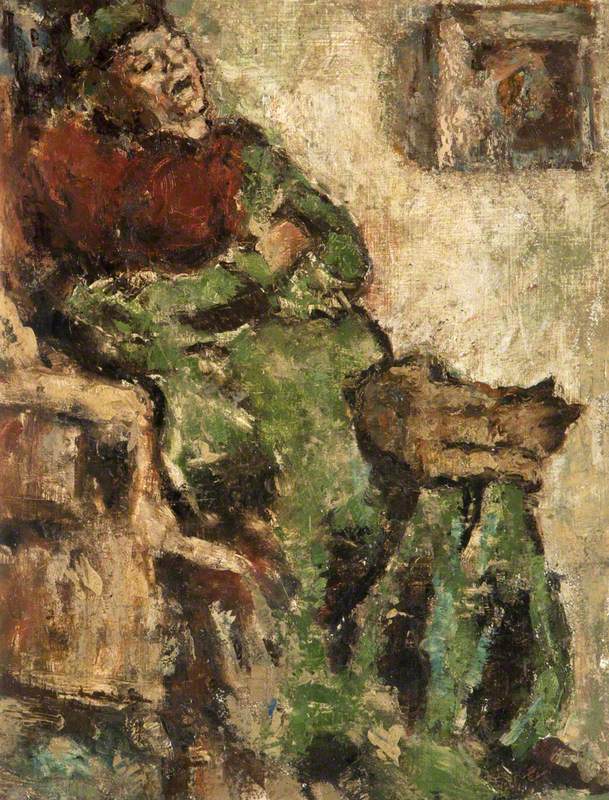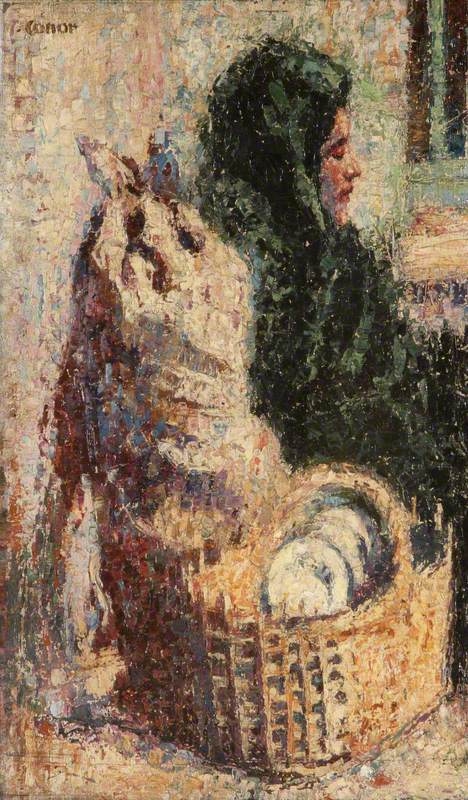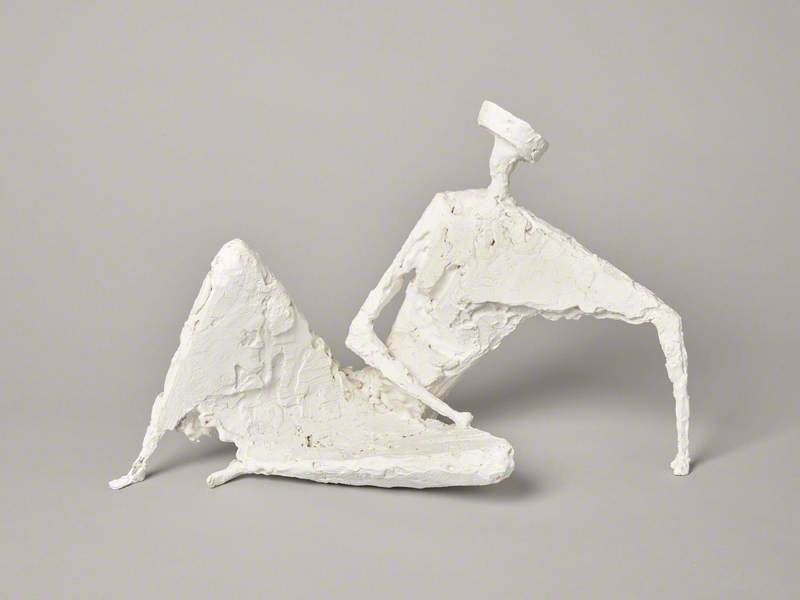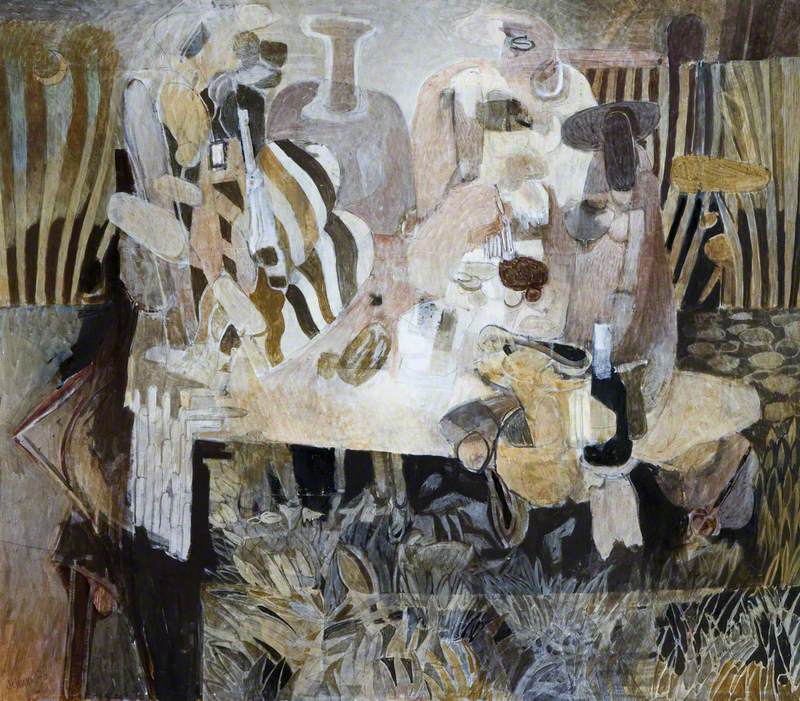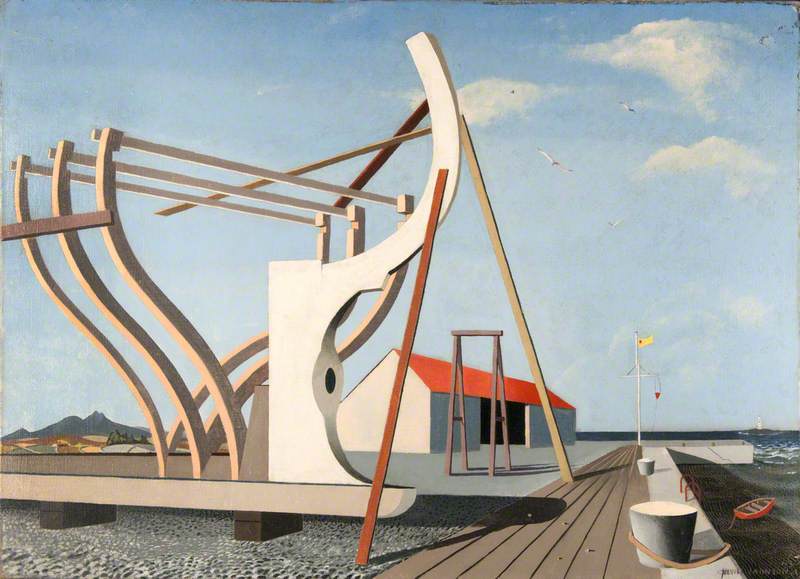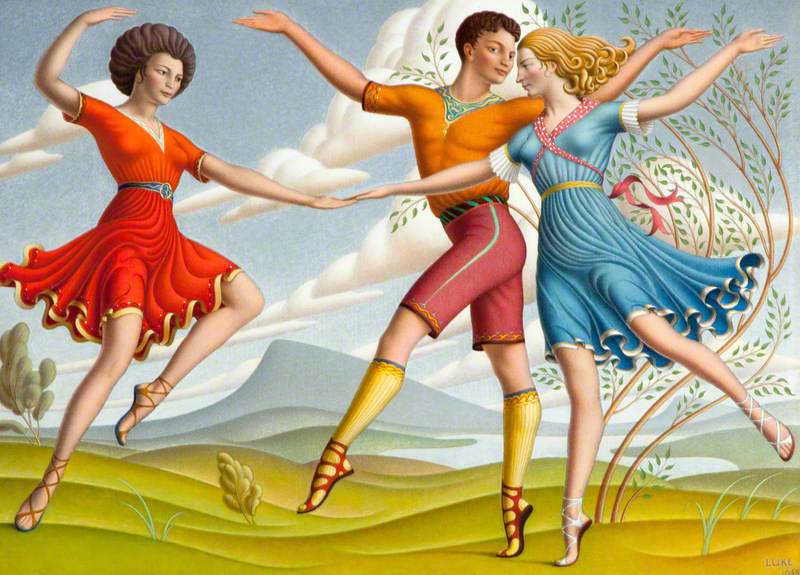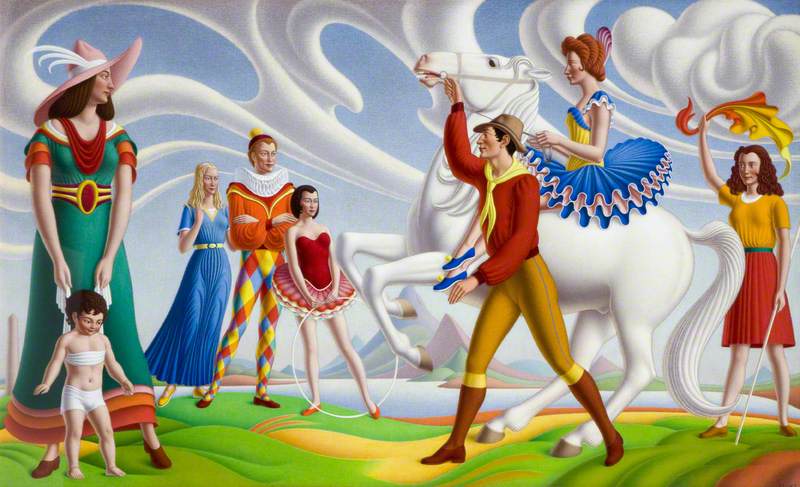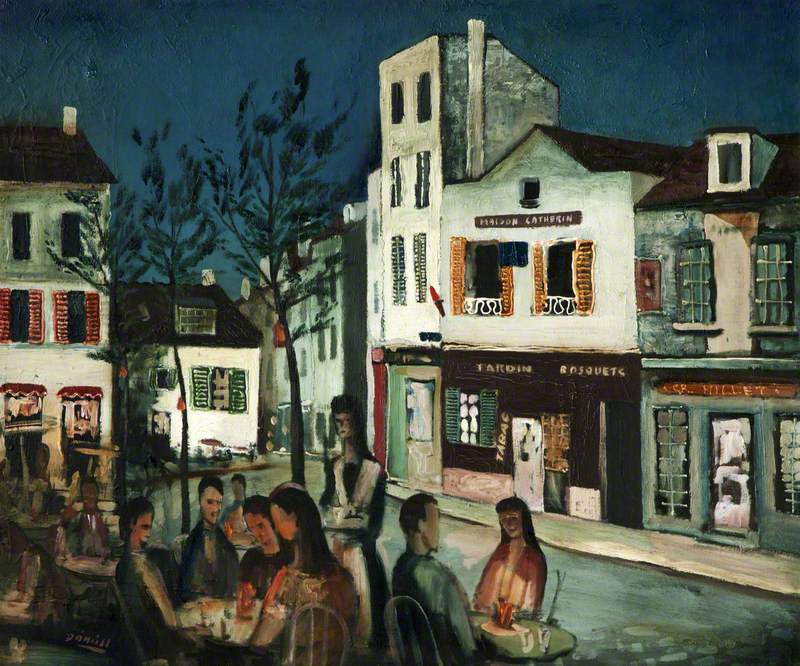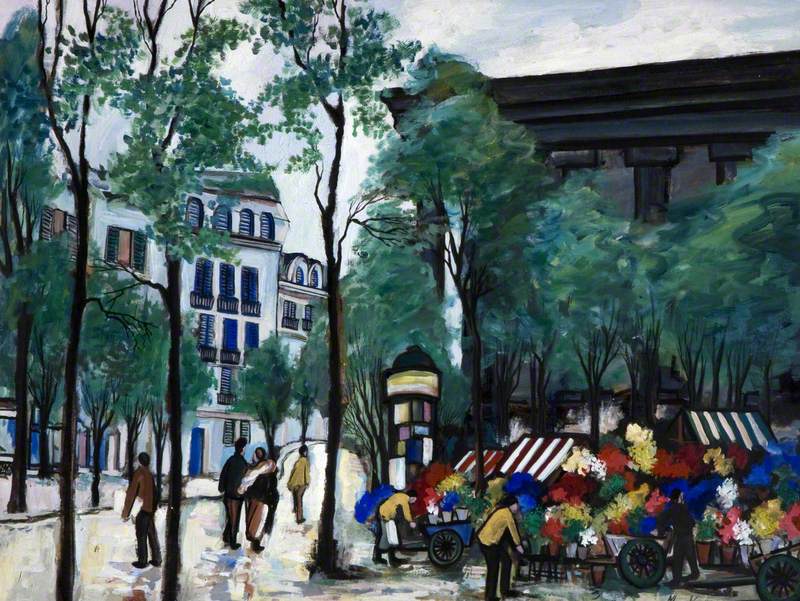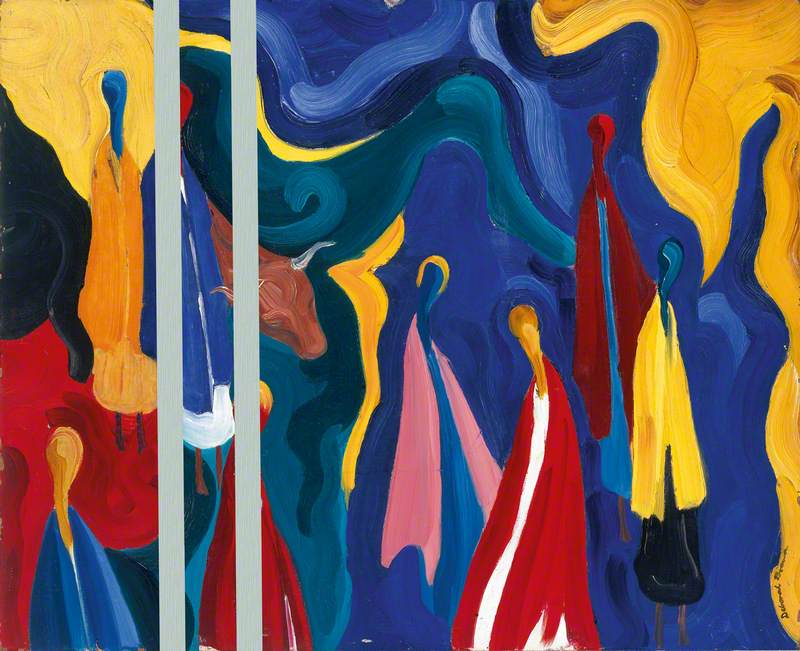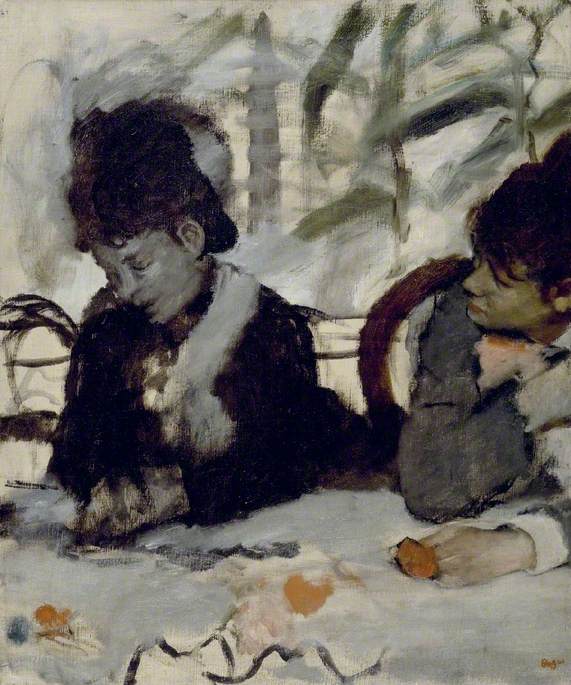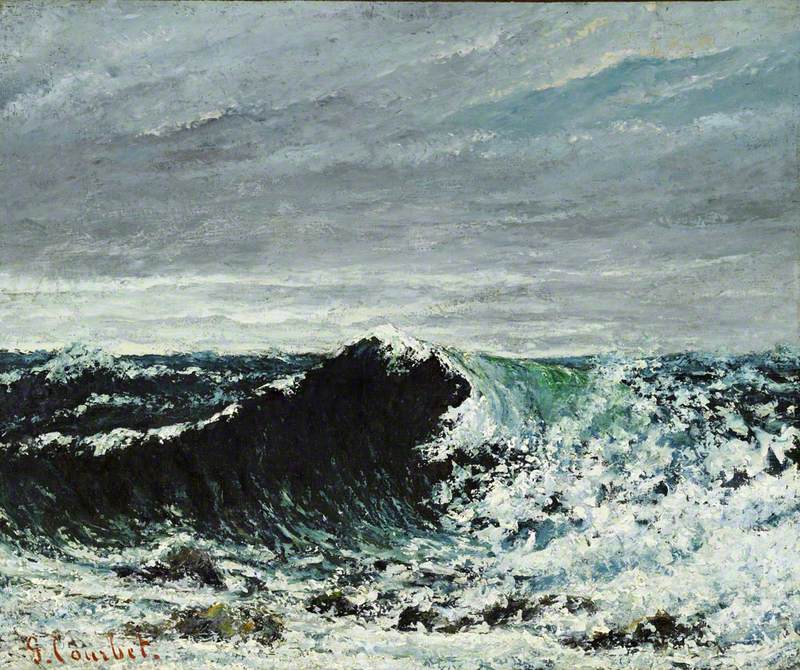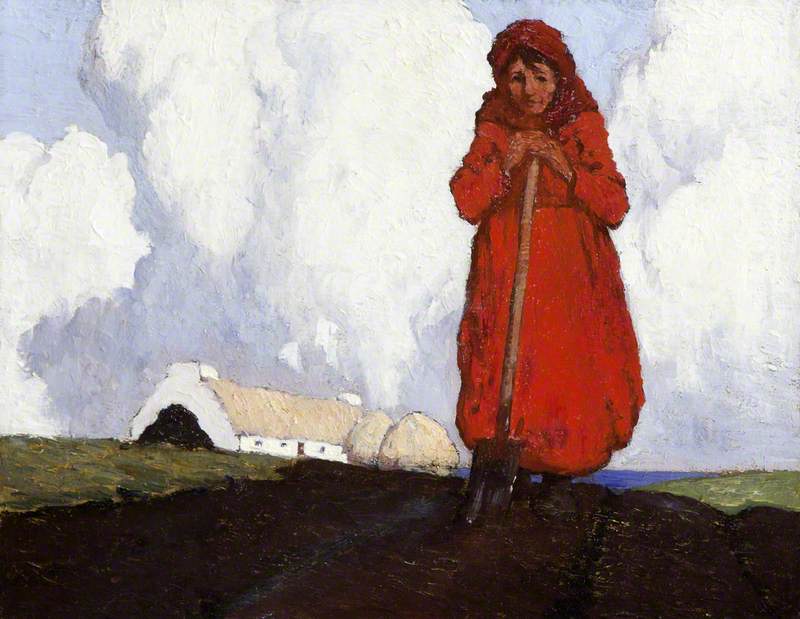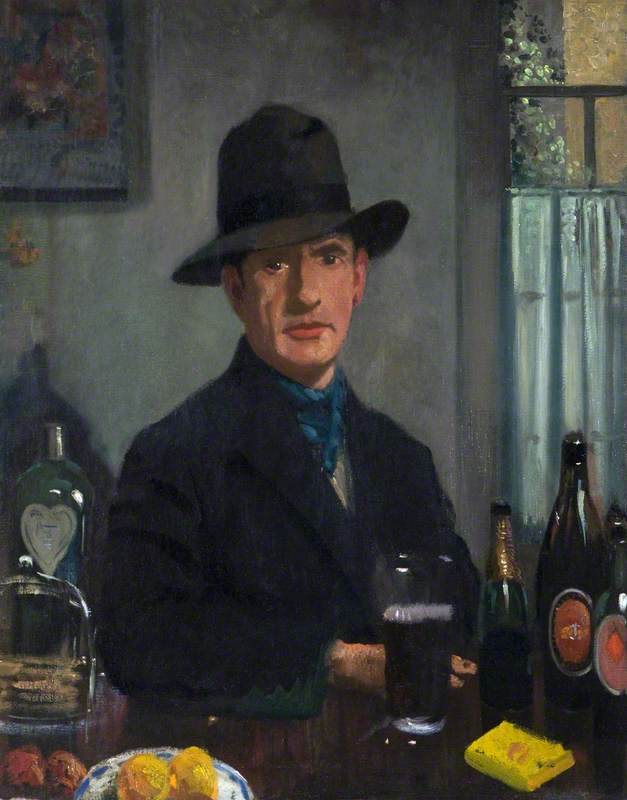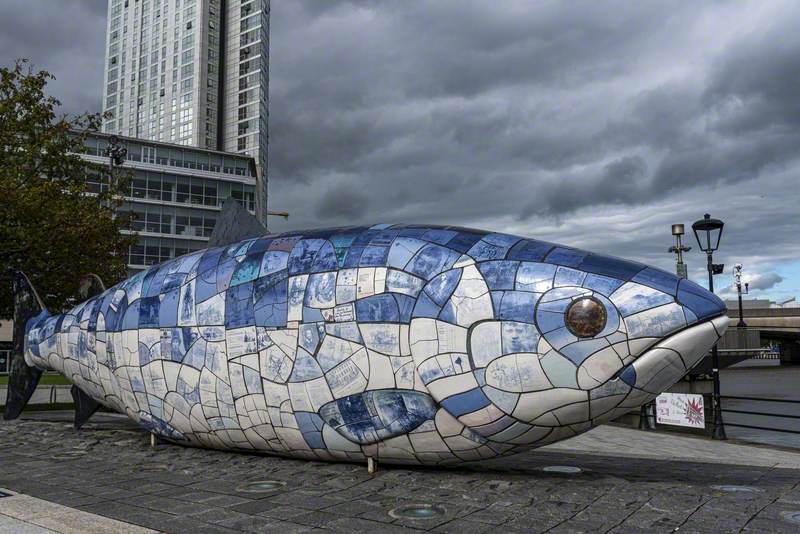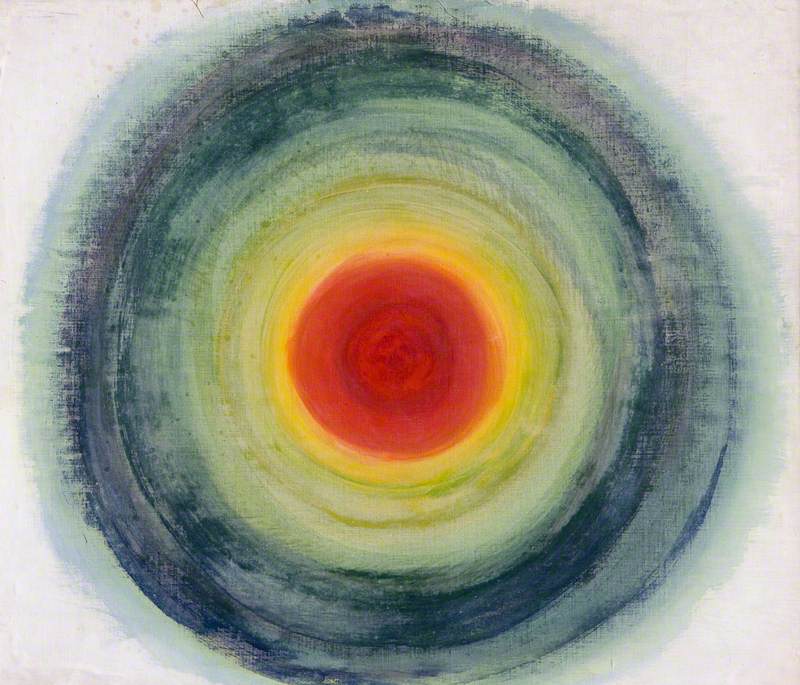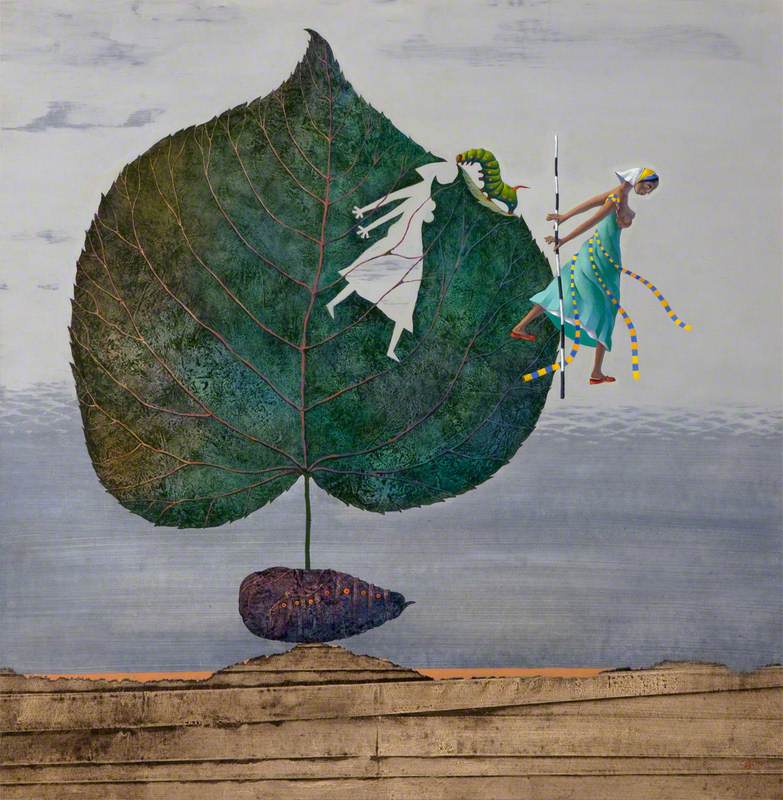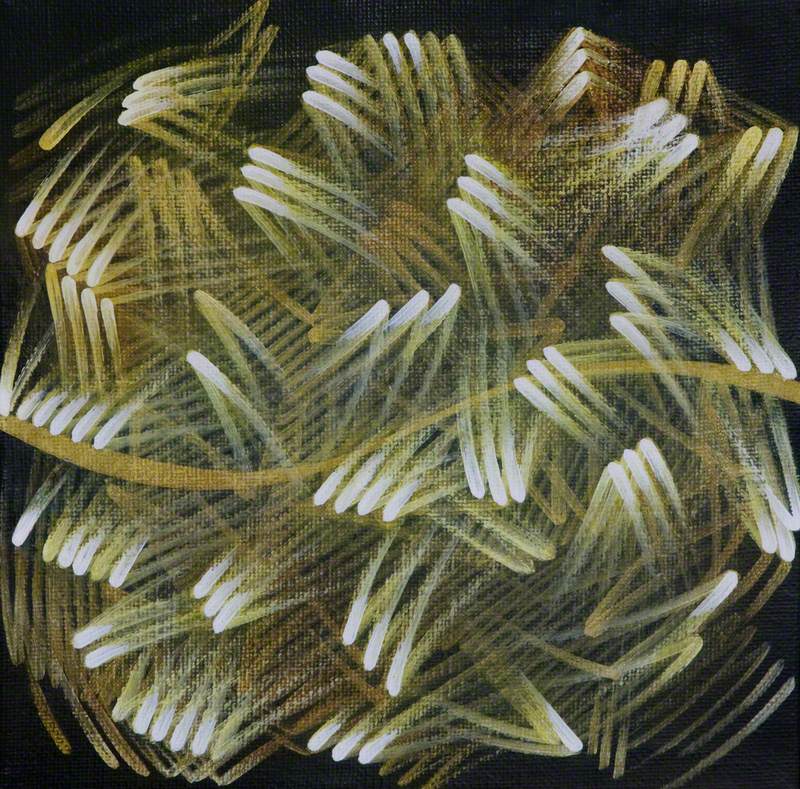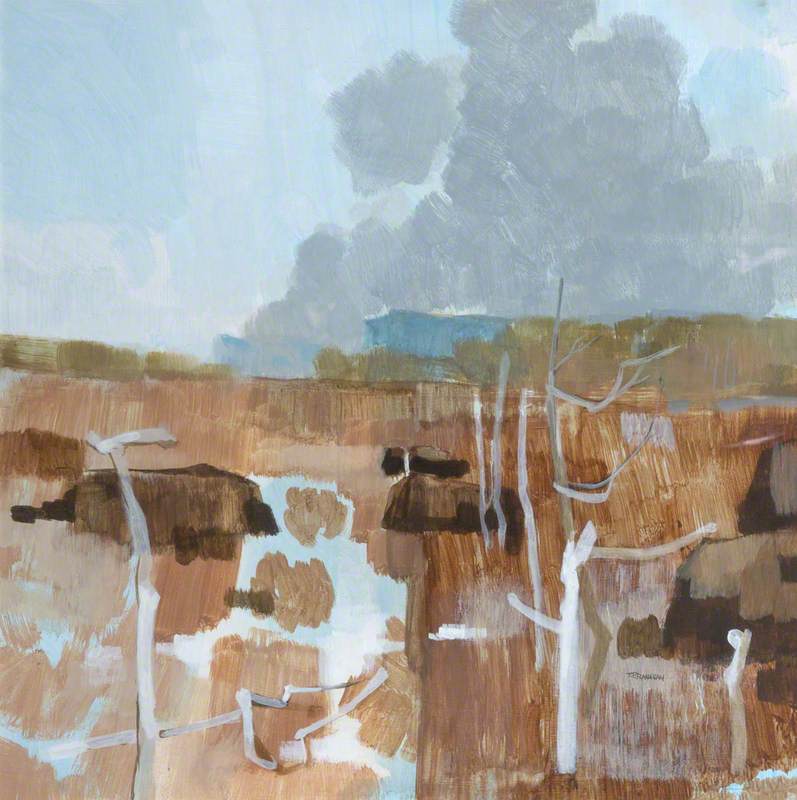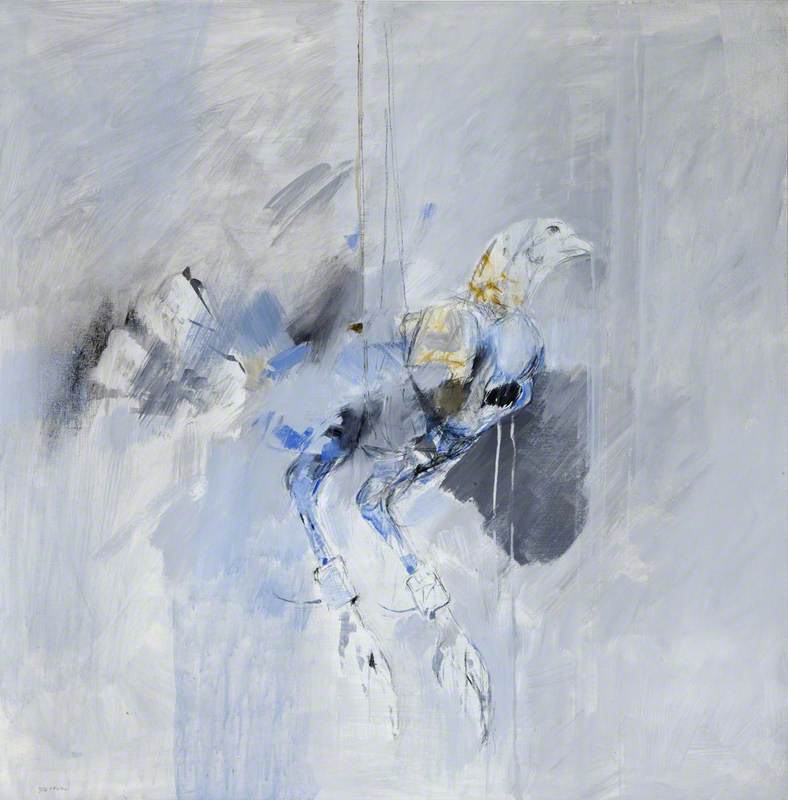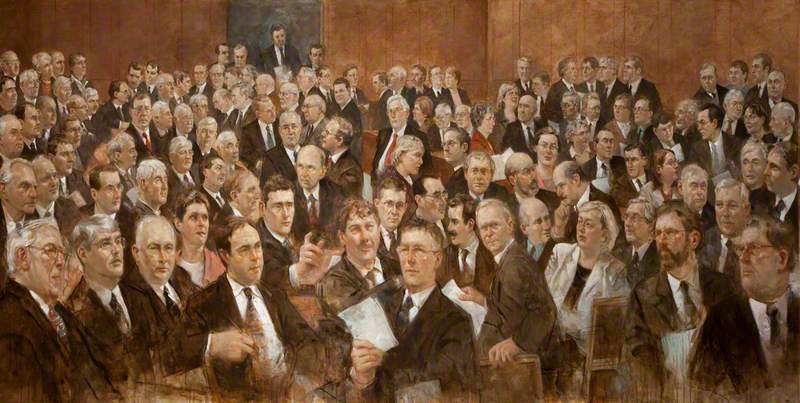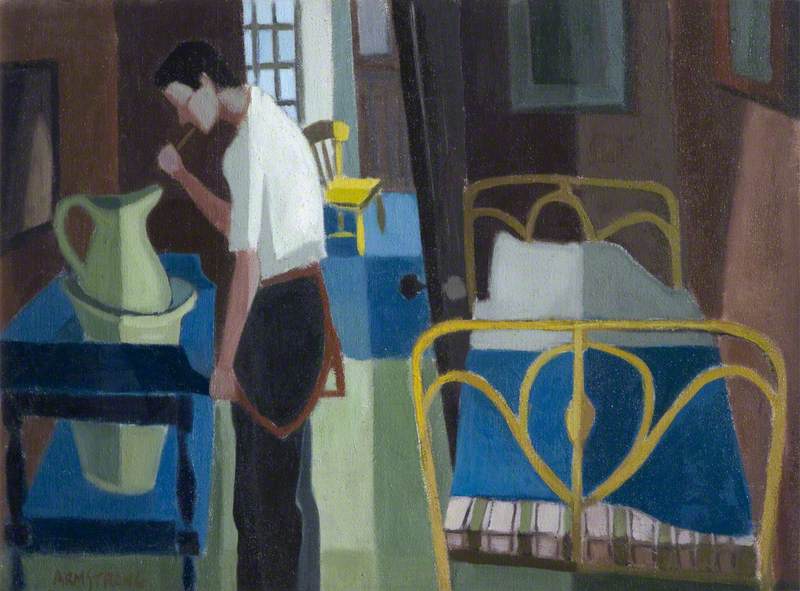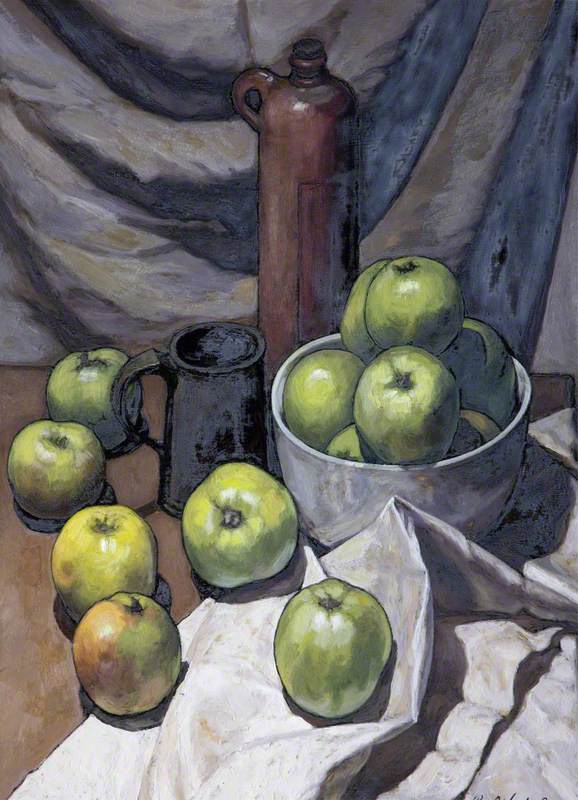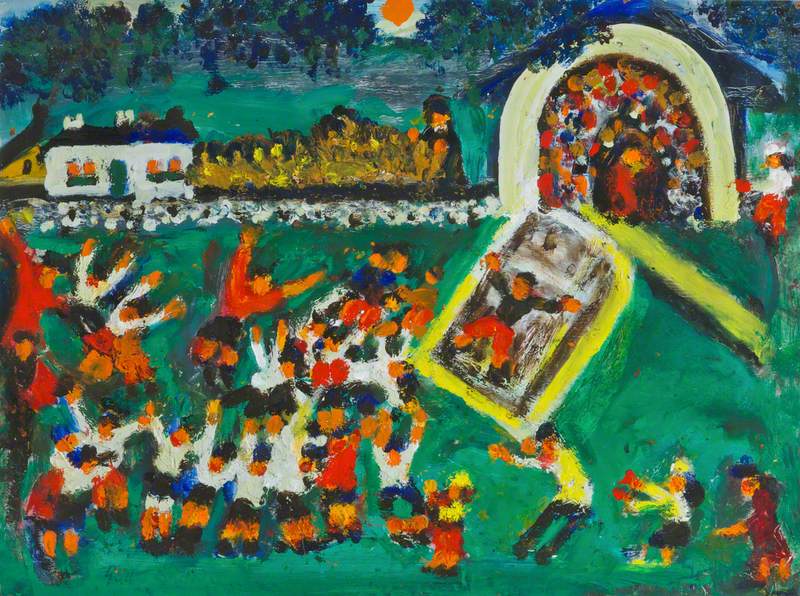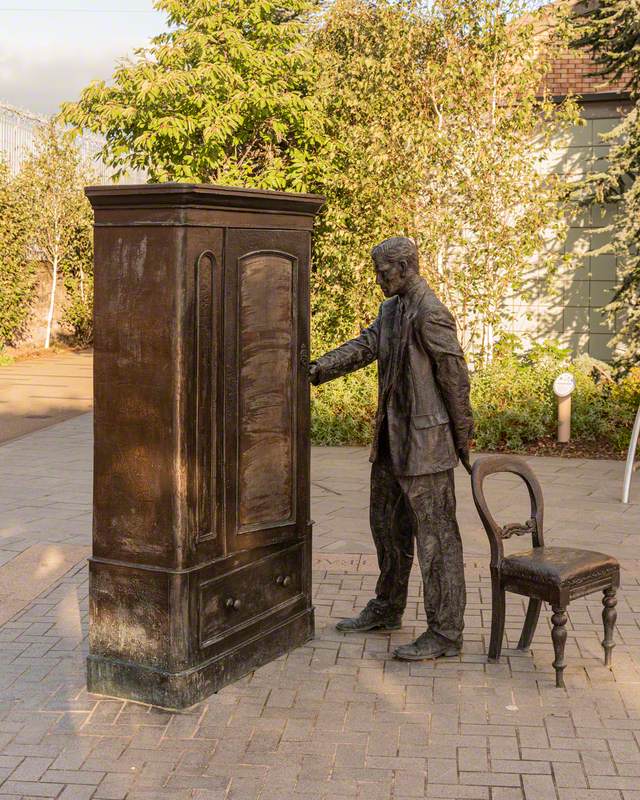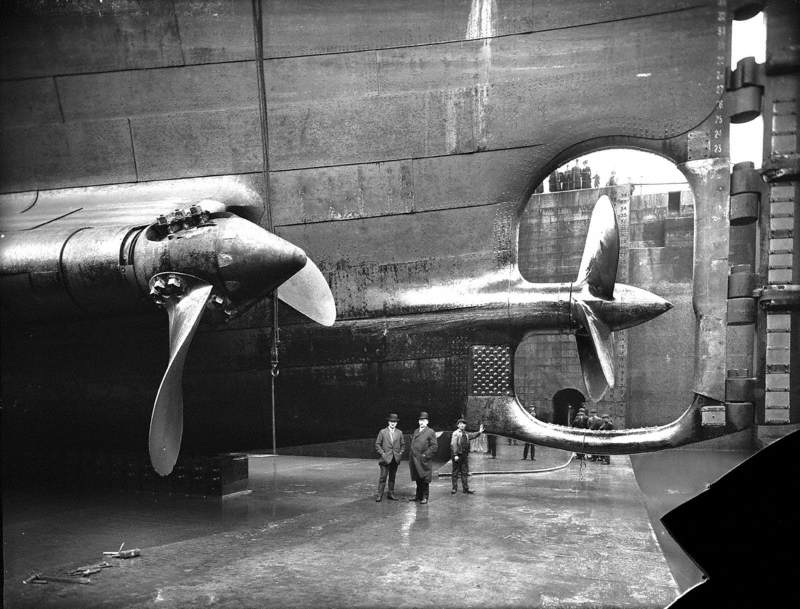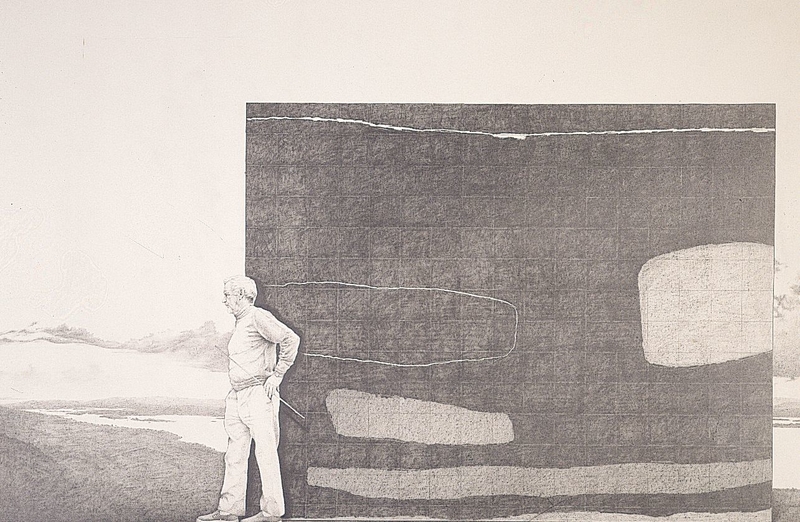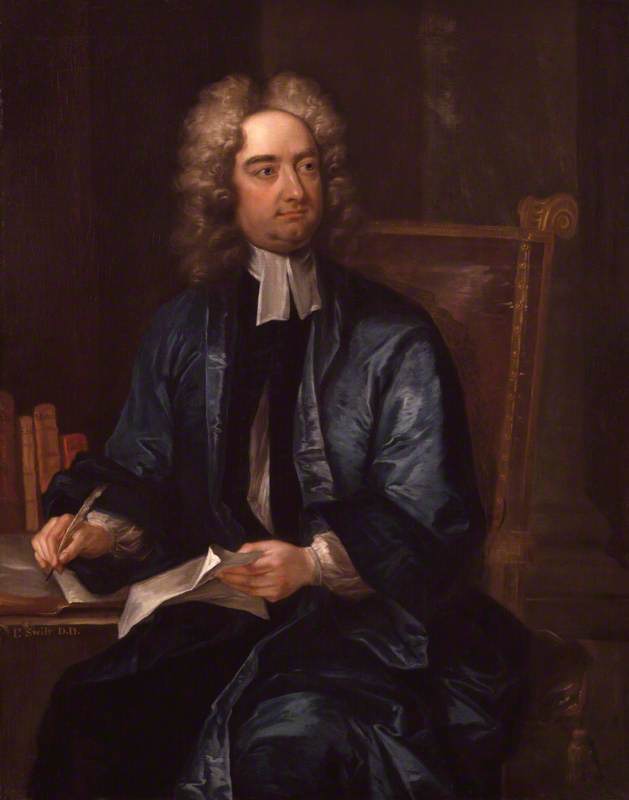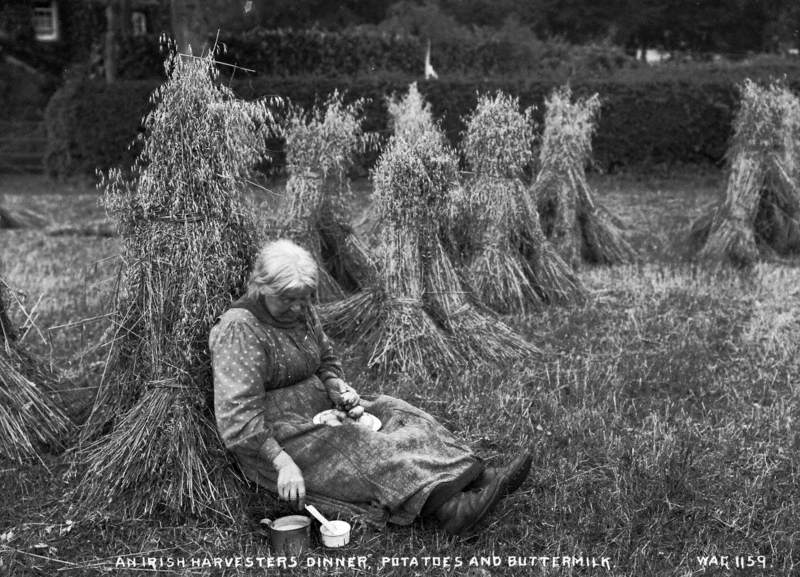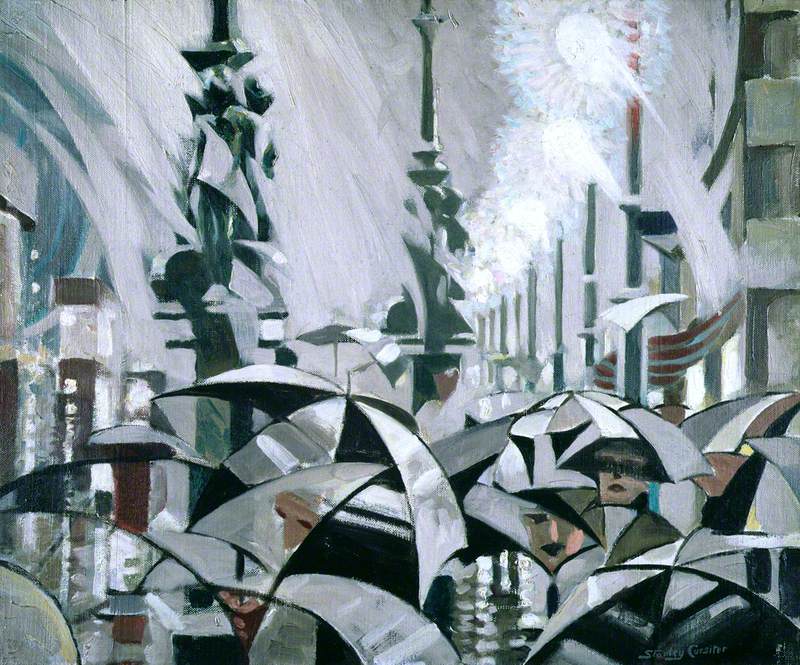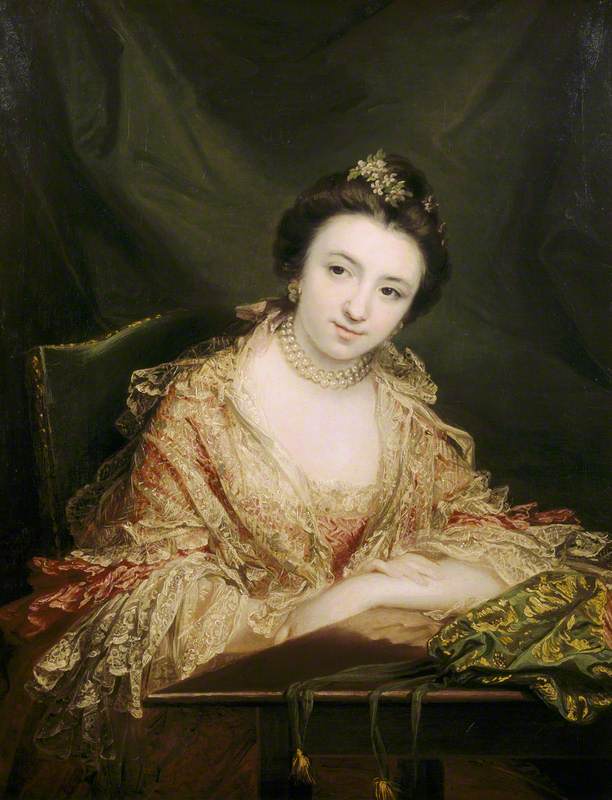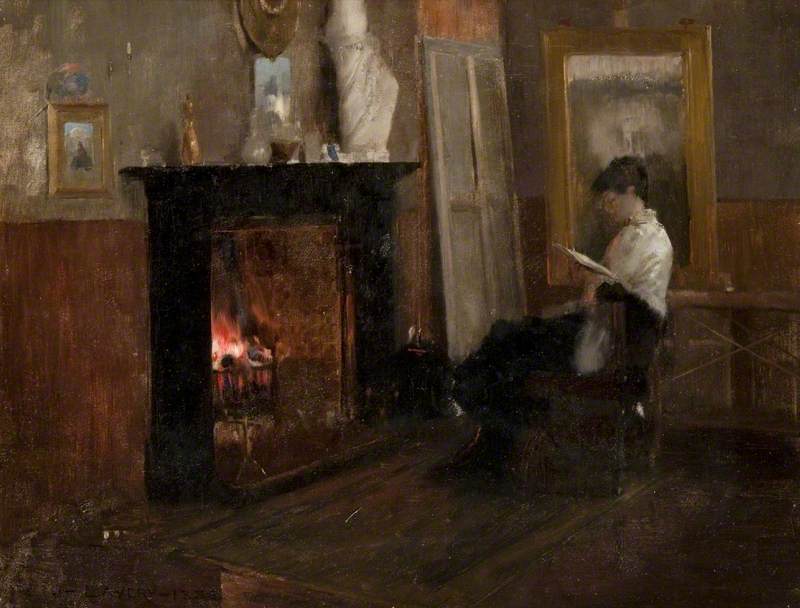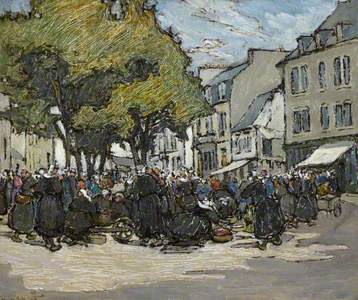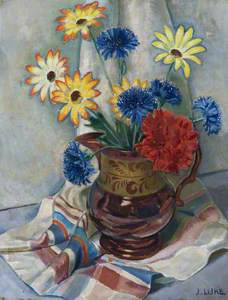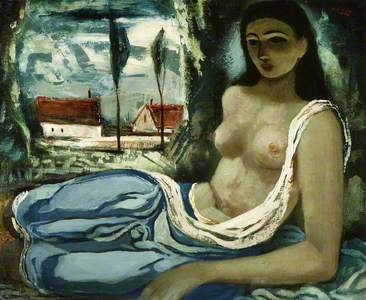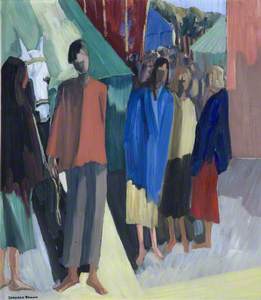For many artists living and working in Northern Ireland in the first part of the twentieth century, Paris was a beacon: a city that epitomised not only artistic innovation and achievement but also a bohemian lifestyle that was difficult to re-create in the conservative atmosphere of industrial Belfast.
Tour de l’Horloge, Dinan, Brittany
Georgina Moutray Kyle (1865–1950) 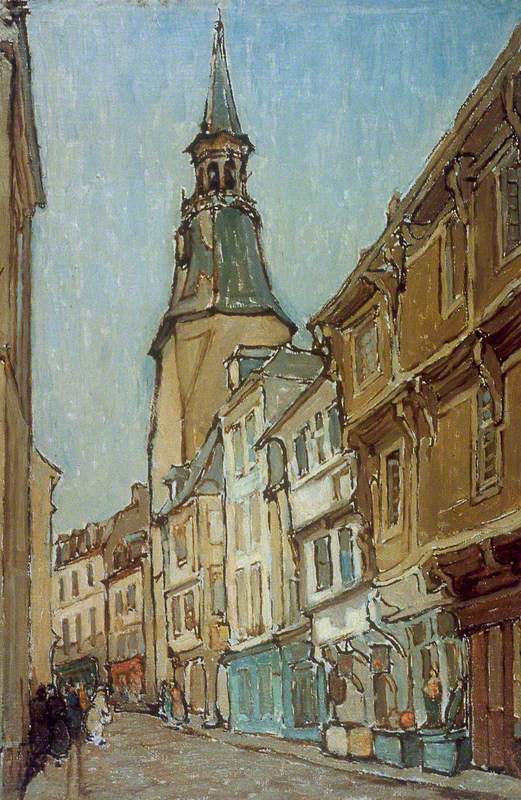
Close to the end of the nineteenth century, two artists from prosperous Northern Irish families, Rosamond Praeger (1867–1954) and Georgina Moutray Kyle (1865–1950), both studied in Paris before returning home – although Kyle continued to travel throughout her career (and later showed at the Paris Salon), finding subject matter for a number of paintings in the places she visited.
Belfast-born Paul Henry (1876–1958) came to Paris in 1898 after studying at the School of Art in Belfast, and although it was over a decade before he settled in Achill, Co. Mayo, Henry's paintings of the west of Ireland were strongly influenced by Whistler, with whom he had studied in France.
Even in the early twentieth century, travelling from Belfast to Paris was a lengthy and comparatively expensive process. Significant numbers of young Dublin artists continued their training in one or other of the Paris ateliers, but it is notable that this pathway was often more accessible to those from better-off backgrounds, whereas many of the more promising art students in Belfast depended on scholarships or income from jobs and apprenticeships.
The Cubist artist, writer and teacher André Lhote was popular among Irish students in the post-war years and the 1920s, with Mainie Jellett, Evie Hone, May Guinness and Norah McGuinness the most prominent of those he taught at this time.
Perhaps unexpectedly, one of the very few Northern Irish artists to enrol with Lhote was William Conor (1881–1968), who appears to have been in Paris in the early 1920s.
Lhote's influence does not appear to have impinged at all on Conor's style, although it would be interesting to know whether he had seen the work of Daumier or even Degas while there, as strong echoes of these artists permeate the Belfast painter's work, in technique, mood, medium and even subject matter.
It was not unusual for young artists from Belfast to continue their training in London in the 1920s and 1930s, often thanks to the scholarships that were available through Belfast College of Art. Most of these returned home soon after their student days were completed; a handful, such as William Scott (1913–1989) and F. E. McWilliam (1909–1992) remained in England and made their careers outside Ireland.
Paris, however, despite the number of Dublin students who had travelled there to study and work, remained elusive for many Northern Irish artists, and its influence in the early twentieth century was, as a result, limited.
In his autobiography The Other Side of Six, artist Nevill Johnson (1911–1999) evoked Belfast in 1934: the 'pew-brown paint on those Presbyterian façades, few signs of style or culture'. The impact of Paris – seeing the collections in its museums and the new art being made there, as well as experiencing life in the city – must therefore have had an enormous impact on Johnson and two other young painters, John Luke (1906–1975) and Charles Harvey (1895–1970), who made the journey there by train and boat in 1936.
John Luke had studied at the Slade School and would have been aware of modern European painting after living in London, with Cézanne clearly influential in his paintings of the early 1930s, as well as suggestions of Seurat in some works. Of these three, however, it was undoubtedly Johnson who was most strongly affected by the experience, and he recalled their visit.
'We stayed for a time in Paris exploring and tasting rare fruits. Braque and Picasso held sway and the surrealists were on stage; Ernst, Magritte and Tanguy, Lipschitz [sic] and Gargallo, splendid straight-faced progenitors of the fur-lined teacup and the spiked flatiron, tripping my pulse... life-enhancing stuff it was.'
Under some family pressure to follow a business career rather than study art, Nevill Johnson moved to Belfast in 1934 and painted alongside John Luke in the evenings. His early work demonstrates a technical skill that recalls Luke but his personality was quite different, as was the more emotional and overtly intellectual nature of his art. In Paris, Johnson was struck by the work of Picasso, who remained a strong influence throughout his career, as well as the Surrealists, an influence which was reinforced by the 'London International Surrealist Exhibition', which the three saw on their way back to Belfast.
The surrealist influence was quickly absorbed into Johnson's art and the bright and inventive reinvention of well-known motifs of the Northern Irish landscape of his wartime paintings, such as Kilkeel Shipyard, have darker overtones. These became more evident in his post-war work, in which the driftwood and other objects he collected, much as Breton had done in Paris, were introduced into barren shores and post-apocalyptic wastelands that recall Yves Tanguy.
This exposure to modern painting and surrealism appears to have had little impact on Johnson's travelling companions. However, the intense, often non-naturalistic palette of Luke's tempera painting and the increasingly fantastic invention of his figure compositions is often considered to contain some element or influence of surrealism.
Daniel O'Neill (1920–1974) was slightly younger than this group and had worked as an electrician while taking evening classes at Belfast College of Art. O'Neill's romantic and rather bohemian nature was clearly drawn to Paris and he admired a number of artists who had worked in France in the early part of the twentieth century. Rouault, Vlaminck and Utrillo were dominating influences in O'Neill's work, and he is likely to have known their work from the 'Irish Exhibition of Living Art' and exhibitions at the Victor Waddington Galleries in Dublin, where O'Neill himself began to show in the mid-1940s.
O'Neill's visit to Paris in 1948 was originally intended to last three weeks but he stayed almost six months, and he is one of the few Belfast artists of this period to have made paintings of the city. Karen Reihill notes that O'Neill seems to have enjoyed Montmartre and 'engaged in the bohemian life', and he also made a number of paintings of Paris as well as smaller towns and rural landscapes that suggest he took the opportunity to explore beyond the capital.
The influence of these artists and the romantic bohemianism he experienced in Paris remained strong in O'Neill's work, but the direct experience of the city and its artists at this time perhaps gave his painting in the late 1940s and early 1950s an intensity that was difficult to maintain.
Markey Robinson (1918–1999) appears to have visited Paris on a number of occasions in the 1940s and perhaps again later, as he was an inveterate traveller. Apparently he met Raoul Dufy in France, although the direct, naïve approach of Utrillo and the work of Rouault seem to have been stronger influences.
Paris had a powerful effect on the work of Deborah Brown (1927–2023) when she first stayed there in 1950, and this was absorbed in a complex manner in her painting. A small number of canvases survive that were painted in Paris, depicting the distinctive bridges and architecture of the city in a stylised but representational manner. She recalled the transformative influence of the modern paintings she saw in the Musée d'Art Moderne and, most significantly, the stained glass in Notre Dame and Chartres.
As well as inspiring a complete change in her palette to 'the use of primary colours juxtaposed in a way that was a total negation of everything I had been taught about tonal values', the tapestries of The Lady with the Unicorn in the Musée de Cluny, she explained, 'set me off on the idea to use Irish legends as subjects'.
In comparison with Dublin, the artists and art schools of Paris had little direct impact in Belfast, but for some, the influence was clearly significant. The freedom these artists found in the city and the celebration of art as a central aspect of life must have been a release after the practically minded and socially restrictive life of Belfast, where there were few galleries or opportunities for artists to sell works.
The experience of seeing modern European painting as well as that from other periods and schools, and the stained glass and tapestries that were so significant for Deborah Brown, provided new inspirations and directions that remained important to them for many years.
As travel became easier in the late 1950s and 1960s, and influences from other continents, particularly the USA, became overwhelming, Northern Ireland began to open up to contemporary art, but the excitement experienced by the generation tasting the 'rare fruits' of Paris in the years around the Second World War still emerges through their work.
Dickon Hall, art historian and Art UK Commissioning Editor (Northern Ireland)
This article was supported by the Esme Mitchell Trust

